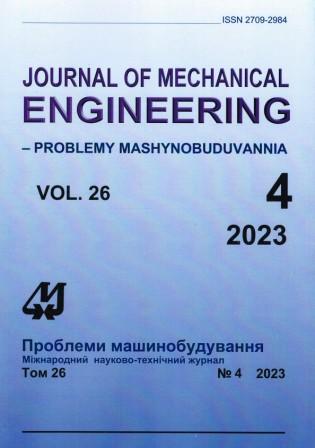Study of the Structure and Properties of Deposited Layers of NiCrBSi Alloy, Modified with Composite Material
Abstract
The structure and properties of deposited layers with a self-fluxing PG-10N-01 alloy of the NiCrBSi system, which is modified with composite material obtained by self-propagating high-temperature synthesis, were studied. Powders of titanium, technical carbon, refractory clay, aluminum, iron oxide, and PT-NA-01 thermosetting powder are used as the initial components of the modifying composite material. The powders were mechanically activated in a ball mill, pressed into a cylindrical sample, and then subjected to the process of self-propagating high-temperature synthesis. The deposition of the samples was carried out with a non-fusible graphite electrode with a diameter of 9.5 mm, at a current of 110 A, using an inverter power source SV-290NK. It was established that the structure of the layer deposited with the PG-10N-01 alloy consists of a solid solution based on nickel (γ-Ni) and a eutectic formed on its basis with Ni3B boride. Single inclusions of carbides of chromium Cr3C2 and boron B4C were also detected in the deposited layer. When adding a modifying composite material to the PG-10N-01 alloy, the structure of the deposited layer consists of γ-hard solution and eutectics, strengthened by carbides of titanium TiC and silicon SiC, which increase the microhardness and wear resistance of the layer. The microhardness of the layer deposited with the composite material, which contained 10% of the modifying component, is 660 HV, which exceeds the microhardness of the layer deposited with the PG-10N-01 alloy, which is equal to 510 HV. Based on the results of the research, operational tests of the set of duckfoot blades of the KPP-8 semi-trailer cultivator, aggregated with the New Holland T 6090 tractor, were carried out in the conditions of the Kamianuvatka farm (Novoukrainka district, Kirovohrad region). Based on the tests, it was proved that the relative wear resistance of duckfoot blades made of 65G steel, strengthened on the reverse side according to the "toe-working blade" scheme by depositing a layer of composite material is 1.7 times greater compared to the wear resistance of blades made by standard technology logic.
Downloads
Published
Issue
Section
License
Copyright (c) 2024 П. А. Ситников

This work is licensed under a Creative Commons Attribution-NoDerivatives 4.0 International License.
All authors agree with the following conditions:
- The authors reserve the right to claim authorship of their work and transfer to the journal the right of first publication of the work under the license agreement (the agreement).
- Authors have a right to conclude independently additional agreement on non-exclusive spreading the work in the form in which it was published by the jpurnal (for example, to place the work in institution repository or to publish as a part of a monograph), providing a link to the first publication of the work in this journal.
- Journal policy allows authors to place the manuscript in the Internet (for example, in the institution repository or on a personal web sites) both before its submission to the editorial board and during its editorial processing, as this ensures the productive scientific discussion and impact positively on the efficiency and dynamics of citation of published work (see The Effect of Open Access).

